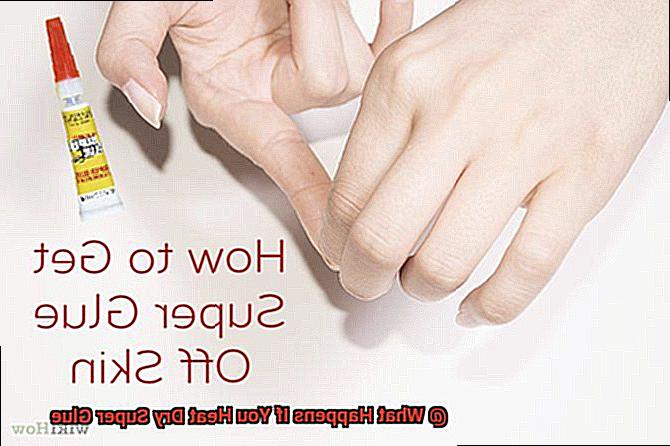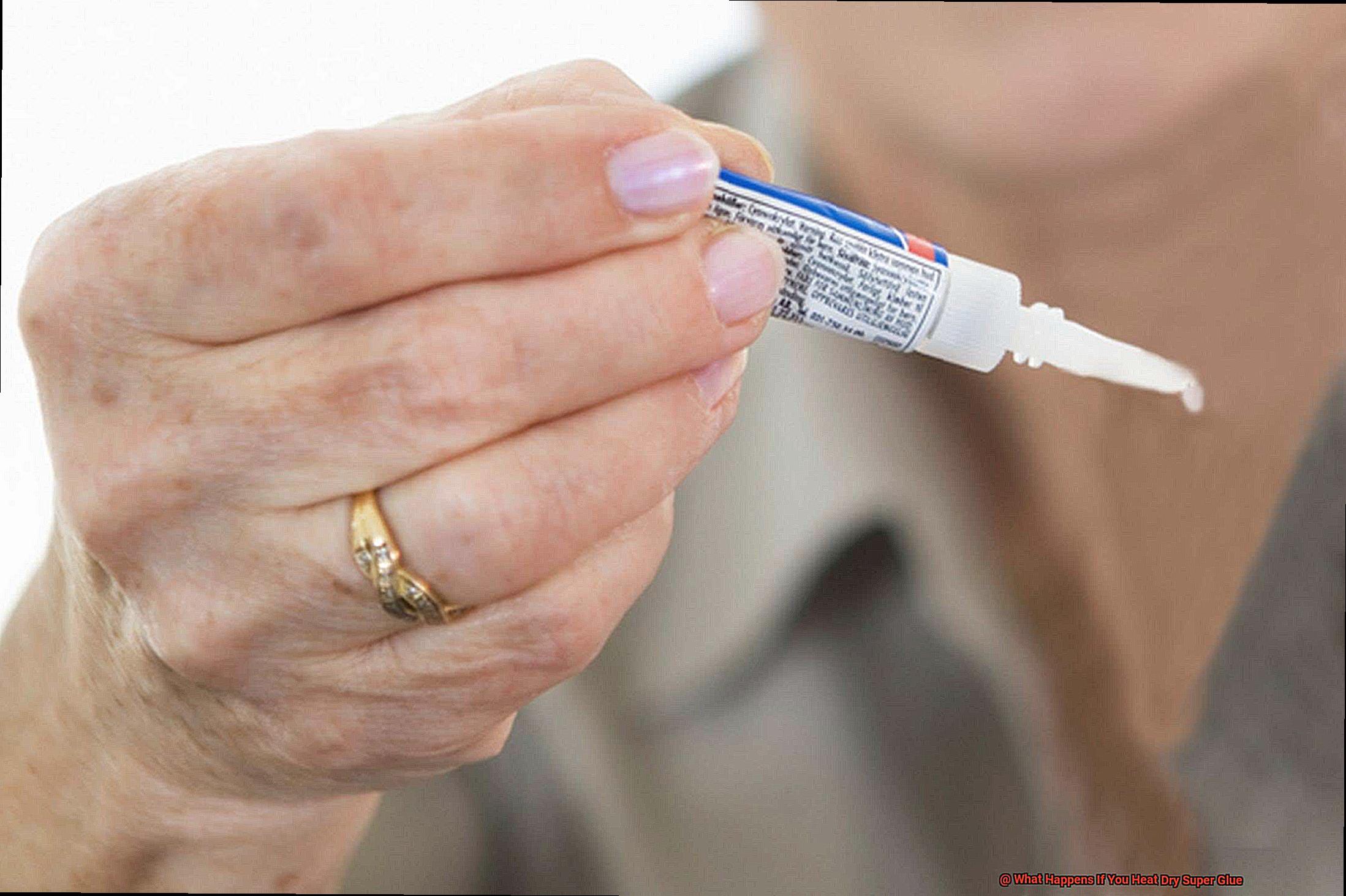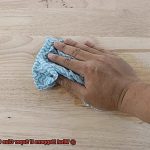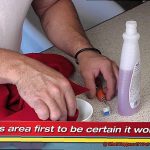Super glue, our trusty sidekick in fixing shattered objects, has always amazed us with its lightning-fast bonding abilities. But what if we dared to push the boundaries and expose dried super glue to scorching heat? Brace yourself for a mind-blowing adventure as we dive headfirst into the captivating world of heated super glue.
In this blog post, we’ll unravel the mysteries that lie within this daring experiment – from mind-bending transformations to jaw-dropping revelations. Prepare to witness an ordinary adhesive’s extraordinary powers when it encounters extraordinary temperatures.
Get ready to have your mind blown.
What is Super Glue?
Contents
When it comes to bonding objects quickly and securely, there is one adhesive that stands out above the rest – super glue, also known as cyanoacrylate adhesive. In this article, we will explore the characteristics and uses of super glue, shedding light on why it has become a popular choice for a wide range of applications.
The Science Behind Super Glue:
Super glue owes its incredible bonding power to its composition of cyanoacrylate monomers. These small molecules polymerize rapidly when exposed to moisture, creating a strong network of interconnected polymer chains. This unique reaction allows super glue to transform from a liquid state to a solid one in just seconds.
Instant Bonding:
One of the most impressive qualities of super glue is its ability to bond almost instantly. Upon application, the adhesive reacts with the moisture present in the air or on the surface, triggering the polymerization process. This fast curing time makes super glue ideal for quick repairs or projects where immediate bonding is crucial.
Unmatched Strength:
Once cured, super glue forms an incredibly strong bond that can withstand significant forces and stresses. The cyanoacrylate monomers create long chains of polymers that intertwine with the surface molecules, resulting in a durable and reliable adhesive. Whether you need to repair broken objects or secure items in place, super glue’s strength won’t let you down.
Versatility:
Super glue is renowned for its ability to adhere to a wide variety of materials. Whether it’s plastics, metals, ceramics, glass, or rubber, this adhesive forms excellent bonds on almost any surface. This versatility makes it a go-to choice for both household repairs and professional projects.
Resilience to Harsh Conditions:
Super glue exhibits exceptional resistance to temperature extremes, chemicals, and moisture. Even when exposed to challenging environments, it maintains its adhesion properties, making it suitable for both indoor and outdoor use. Additionally, its transparent nature when dry ensures that it won’t interfere with the appearance or aesthetics of the bonded surfaces.
Effects of Heating Dry Super Glue
Perhaps your fingers are glued together, or you need to separate two objects desperately. In such cases, heating dry super glue might be the solution. However, before you reach for your blowtorch or heat gun, it’s crucial to understand the effects that heating dry super glue can have.
Firstly, heating dry super glue can weaken or break down the bond between the glued surfaces. The heat has the power to soften or even melt the glue, reducing its adhesive properties and potentially allowing the materials to separate or become loose. However, it’s important to note that the exact temperature at which this occurs can vary depending on the type of super glue and the materials involved.
But that’s not all. Heating dry super glue can also release fumes that may irritate your respiratory system. These fumes can cause discomfort such as headaches or dizziness, so it’s crucial to ensure proper ventilation when using heat with super glue.
Moreover, be aware that heating dry super glue can potentially damage certain materials. For instance, if you heat super glue on a plastic surface, it may cause discoloration or even melt the plastic. Similarly, delicate fabrics or materials can suffer from discoloration or damage when exposed to heat.
It’s worth mentioning that heating dry super glue should be done with caution and only when necessary. Excessive heat not only affects the bond strength but also poses a fire hazard. Always follow safety guidelines and manufacturer instructions when using heat with super glue.
Potential Loss of Adhesive Properties
You’ve probably experienced the magical powers of super glue. But what happens when heat enters the equation? In this blog post, we’ll explore the potential consequences of heating dry super glue and why it’s crucial to proceed with caution. So grab a cup of coffee and join us as we dive into the fascinating world of adhesive science.
Weakening Bonds:
Introducing heat to dry super glue can weaken the bond it forms between surfaces. High temperatures accelerate the polymerization process in super glue, resulting in a brittle bond that easily breaks. It’s like putting your bond on a rollercoaster ride that ends in disappointment.
Toxic Fumes:
Heating dry super glue can release fumes that are harmful if inhaled. These fumes irritate your respiratory system, leaving you feeling like you’ve wandered into a toxic foggy forest. Always ensure proper ventilation when using heat with super glue, or you might find yourself coughing and wheezing instead of fixing.
Material Damage:
Different materials have different temperature thresholds, and heating dry super glue can wreak havoc on certain surfaces. Plastic may melt or warp under high temperatures, leaving your project looking like a Salvador Dali masterpiece. Delicate fabrics or materials risk being stained or damaged by the fiery flames, turning your DIY adventure into a fashion disaster.
Storage Stability:
Just like milk left out in the sun, heating dry super glue can affect its storage stability. Over time, exposure to heat degrades the chemical properties of the glue, making it less effective or even unusable. Keep your super glue cool and dry to maintain its quality and extend its shelf life.
Release of Fumes and Toxic Gases
The release of fumes and toxic gases can have significant impacts on our health and well-being. When it comes to super glue, a seemingly harmless adhesive, the potential dangers become apparent when heating it.
Super glue contains a chemical compound called cyanoacrylate. Once heated, this compound emits fumes that can irritate the eyes, nose, and throat. Picture yourself trying to fix something while constantly sneezing or struggling with watery eyes – not exactly an ideal situation.
But the consequences go beyond mere irritation. Prolonged exposure to these fumes can lead to respiratory issues such as coughing, wheezing, and even shortness of breath. Suddenly, our DIY endeavors turn into unwanted breathing exercises.
Unfortunately, the risks don’t end there. Heating super glue can also release formaldehyde gas, a highly toxic substance. Inhaling large quantities of this gas can cause severe health problems, including respiratory and eye irritation. In the worst cases, long-term exposure to formaldehyde gas has been linked to cancer. It’s clear that we need to take precautions.
To protect ourselves, it is crucial to avoid inhaling these fumes and ensure proper ventilation when working with or heating dry super glue. This means opening windows, using fans, or even taking our projects outdoors when possible. These simple steps can make a world of difference in reducing our exposure to toxic gases.
In the event of accidental exposure, seeking fresh air immediately is essential. If symptoms persist or worsen, it is always wise to consult a medical professional. Remember, safety should always be our top priority when handling any type of adhesive.
So let’s be smart about our glue adventures and prioritize our well-being. By taking necessary precautions and respecting the potential risks of fume release and toxic gases, we can enjoy our crafting activities without turning them into dangerous rollercoaster rides.
Brittle Structure and Cracking
When it comes to the world of adhesives, understanding the behavior of brittle structures and the phenomenon of cracking is essential. Whether you’re a DIY enthusiast or a professional in the field, delving into this topic will give you valuable insights into the performance and limitations of various adhesives.
Brittle structures, such as super glue, display a unique response when exposed to heat. The application of heat causes the glue to become rigid and less flexible, making it susceptible to cracking under stress. The temperature at which these cracks form varies depending on the type and brand of adhesive. Some glues may start showing signs of cracking at relatively low temperatures, while others require a more significant heat source.
The appearance of cracks in heated super glue is not just an aesthetic concern but also has a direct impact on its adhesive strength and durability. Cracks compromise the integrity of the glue, weakening its ability to bond objects securely. This means that projects relying on heated super glue may be more prone to breaking or separating, leading to disappointment and frustration.
In addition to cracking, heating dry super glue can also result in a change in color or a yellowish hue. This transformation occurs due to chemical reactions triggered by the heat. While this discoloration does not affect the adhesive properties of the glue, it can be visually unappealing.
However, caution must be exercised when working with heated super glue as it can release toxic fumes. These fumes can irritate your eyes, nose, and throat, posing risks to your health. To ensure safety, it is crucial to work in a well-ventilated area or use a fume hood when heating super glue.
To avoid the negative effects of heating dry super glue altogether, it is best to adhere to its specified temperature range and avoid subjecting it to excessive heat. Proper storage in a cool and dry place will help maintain its bonding properties, ensuring optimal performance when needed.
If you accidentally heat dry super glue and observe cracks or other changes in its structure, it is advisable to discard that batch and start fresh. By doing so, you will be setting yourself up for success in your adhesive endeavors and ensuring the longevity of your projects.
Discoloration and Damage to Materials
In the realm of adhesive wonders, super glue reigns supreme with its unmatched strength. Yet, this formidable hero has a glaring weakness – heat. Brace yourself for a scorching journey as we delve into the world of discoloration and material damage caused by the fiery pitfall of heating super glue.
Discoloration: The Unyielding Stain
Picture this: heating super glue on a clear plastic surface, only to be confronted with an obstinate yellowish stain that defies all efforts to erase it. This is the unfortunate consequence of discoloration induced by heated super glue. Fumes released by the heat react with certain materials, leaving behind an unmistakable yellow or brown mark. Transparent or light-colored materials bear the brunt of this unsightly discoloration.
Damage: A Bond in Jeopardy
Heat does not merely tarnish materials; it also weakens the bond between super glue and its surface. The outcome? Peeling, cracking, and tears in delicate materials like fabrics. Imagine your favorite shirt unraveling at the seams due to a heat-induced adhesive failure.
Factors at Play
The severity of discoloration and damage hinges upon several factors. Higher temperatures and extended exposure times escalate the risk of irreparable harm. Each material possesses its own sensitivity level, necessitating a preliminary test on a discreet area before subjecting the entire surface to heat.
Potential Solutions
Temperature Control:
Maintaining a controlled temperature environment is crucial to prevent discoloration and damage. Avoid exposing super glue to excessive heat sources, such as direct flames or hot surfaces.
Protective Measures:
Shield delicate materials from direct heat when using super glue. Employ heat-resistant barriers or utilize indirect heating methods to minimize the risk of damage.
Testing:
Before employing heat on a large scale, always conduct a small test on an inconspicuous area of the material. This ensures that any potential adverse reactions are identified before irreversible damage occurs.
Conclusion:
Heating dry super glue can be a perilous venture, resulting in discoloration and damage to materials. Discoloration leaves behind stubborn stains that mar transparent or light-colored surfaces, while delicate materials become brittle and tear under the strain of heated super glue. To evade these fiery pitfalls, exercise caution near heat sources and conduct thorough tests beforehand.
Handling and Storing Super Glue
Today, we’re diving into the world of super glue to uncover the precautions you need to take when handling and storing this powerful adhesive. Whether you’re a DIY enthusiast or a professional crafter, it’s crucial to handle super glue with care to avoid any sticky situations.

Protect Yourself:
First things first, let’s talk safety gear. When working with super glue, don’t forget to don a pair of protective gloves. Shield your skin from potential irritation or burns caused by accidental contact.
Less is More:
Remember, a little goes a long way with super glue. Pouring it on like maple syrup on pancakes is unnecessary. A small amount is usually sufficient for most projects, thanks to its incredible bonding power.
Ventilation Matters:
Working in a well-ventilated area is key when using super glue. Those fumes released during the curing process can be unpleasant and irritating. Open windows or switch on a fan to keep fresh air flowing and bid adieu to pesky fumes.
Clean Up Spills ASAP:
Oops. Accidental spills happen, but it’s essential to act quickly. Super glue dries fast and can bond surfaces permanently. Grab acetone or nail polish remover to dissolve and remove excess glue before it becomes a permanent fixture.
Cool and Dry Storage:
Super glue has an expiry date too. To keep its potency intact, store it in a cool and dry place. Heat and moisture can deteriorate the adhesive’s effectiveness, so tightly seal the cap after each use.

Keep Out of Reach:
Little ones and furry friends have no business near super glue. It can be harmful if ingested or applied accidentally to their skin or eyes. Keep it high up and out of reach to avoid any accidents.
Emergency Measures:
In case of a glue mishap, stay calm. If you accidentally bond your skin together, don’t panic. Soak the area in warm soapy water or use acetone to loosen the bond. Seek medical advice if needed.
Assessing the Condition of Heated Super Glue
Super glue, a staple adhesive found in every household, is known for its versatility and effectiveness. However, when exposed to heat, this adhesive can undergo changes that affect its condition and reliability.
Understanding how to assess the condition of heated super glue is crucial for ensuring its effectiveness in various projects.
Let’s explore the key factors that should be considered when assessing the condition of heated super glue.
Color and Appearance:
One of the first things to examine is the color and appearance of the heated super glue. Discoloration or charring indicates that the glue has been subjected to excessive heat. These changes can weaken its bonding strength and render it less effective for use.
Smell:
The smell of heated super glue can also provide valuable insights into its condition. A strong, unpleasant odor suggests that the glue may have been overheated or even burned. This can significantly impact its adhesive properties and make it less reliable for your projects.
Adhesive Strength:
To further assess the condition of heated super glue, perform a simple adhesive strength test. Apply a small amount of the glue to a test surface and try to bond two objects together. If you find that the adhesive strength is noticeably weaker than that of fresh super glue, it’s likely that heating has compromised its bonding capabilities.
Viscosity:
Viscosity plays a crucial role in the application and bonding ability of super glue. Heating can cause the adhesive to become thicker or more runny, affecting its ease of use and effectiveness. Assess whether the heated glue maintains its optimal consistency for your needs.
Texture and Consistency:
Texture and consistency are important indicators of a heated super glue’s condition. If you notice clumps or graininess in the adhesive, it may indicate that heat has triggered chemical reactions within it. These changes can diminish its reliability and effectiveness.
Drying Time:
The drying time of super glue is another factor to consider when assessing its condition. If it takes longer than usual for the glue to dry and form a strong bond, it could be a result of heat affecting its curing process. This can be frustrating when you’re trying to complete your project quickly and efficiently.
Also Read: What Temperature Does Super Glue Melt?
Conclusion
In conclusion, heating dry super glue can have a range of effects on its properties and performance. When subjected to heat, the bond between glued surfaces may weaken or even break, risking separation or loosening of materials. Moreover, heating super glue can emit fumes that irritate the respiratory system, underscoring the importance of proper ventilation. Delicate fabrics and plastics are particularly vulnerable to damage or discoloration when exposed to heated super glue.
Furthermore, subjecting dry super glue to heat can render it brittle and prone to cracking, compromising its adhesive strength and overall durability. Handling heated super glue demands caution to avoid these pitfalls and potential hazards.
To counteract the adverse consequences of heating dry super glue, it is advisable to adhere strictly to specified temperature ranges and prevent excessive heat exposure. Proper storage in a cool and dry environment is also vital for preserving the quality and effectiveness of this adhesive.
Ultimately, comprehending the ramifications of heating dry super glue empowers us to make informed choices when utilizing this potent bonding agent.






